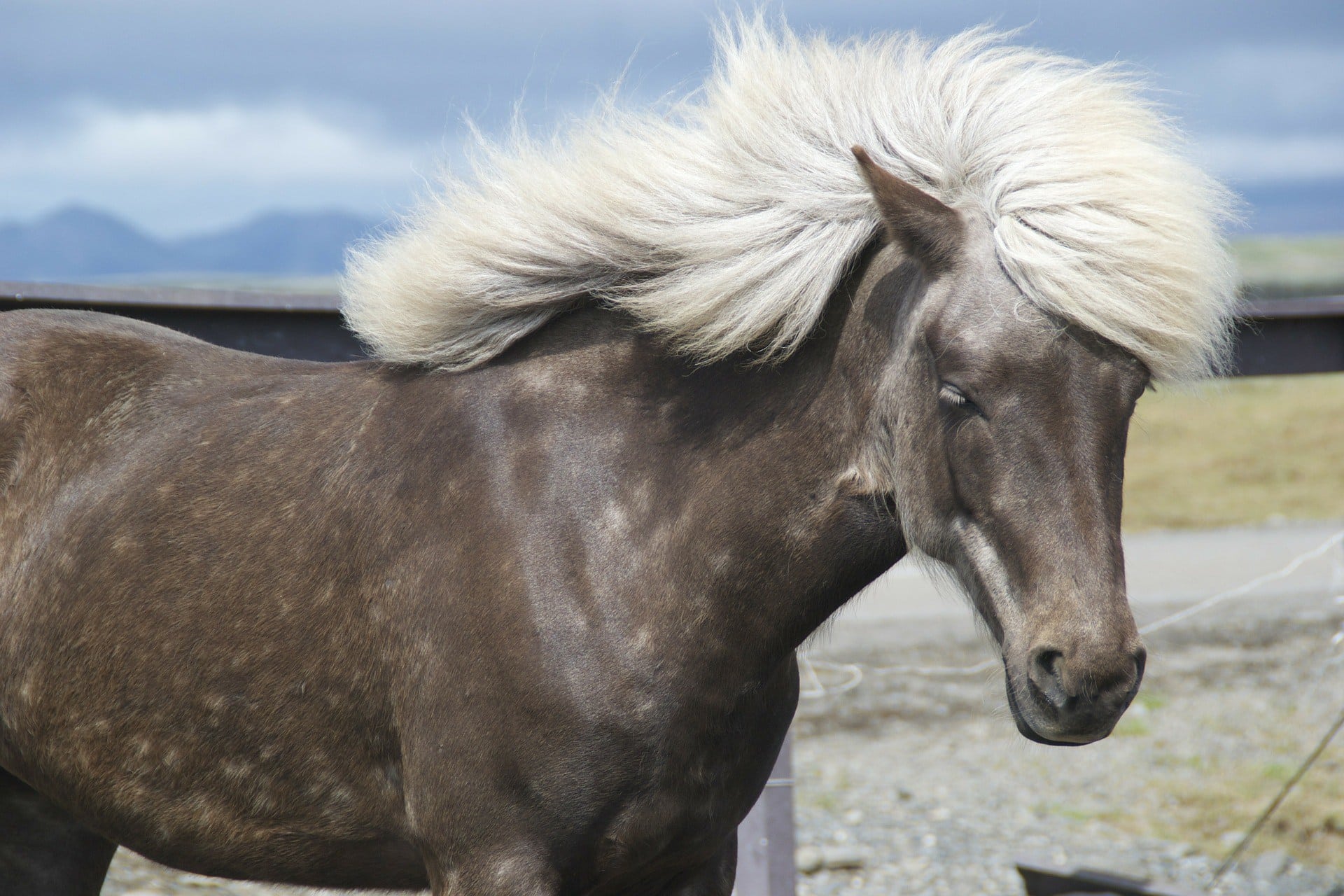
A horse’s mane serves many purposes besides just making them look extra gorgeous, and it takes regular care to keep it healthy and clean. As you groom your horse, you might wonder if the combing and pulling action hurts their mane. Contrary to a long-standing myth, horses do have feeling in their mane and can be hurt if you pull on it.
In this article, we’ll explain how and where horses have feeling in their mane and how to tell if you’re hurting them during grooming. We’ll also give you some tips to make mane care a more comfortable and positive experience for your horse.
 A Horse’s Mane: The Basics
A Horse’s Mane: The Basics
A horse’s hair, including its mane, is primarily made of the same substance as human hair: keratin. This protein also makes up the horse’s hooves, like human fingernails. Like human hair, a horse’s mane constantly grows, although not as rapidly.
Horses don’t have feeling in the actual hair of the mane, just like us. You can cut their hair just like we get haircuts without pain. However, they do have nerves in their hair follicles.
Just like pulling our own hair hurts, yanking on a horse’s mane is painful to them. Because mane pulling has long been an established part of the grooming routine, especially for show and sporting horses, there’s also been confusion over whether horses have feeling in this area.
While there hasn’t been much research done on the subject, in 2015, a grad student’s thesis found that horses experienced increased heart rate and outward signs of stress like hoof stomping during mane pulling. Even horses with no outward pain response could be experiencing hidden indicators like increased stress hormone levels and an elevated heart rate.

What Is Mane Pulling?
Mane pulling is a grooming technique performed to thin out a horse’s mane. Mane growth and thickness vary by breed. Left to their own devices, many horse manes would grow extremely thick and hard to manage.
Anytime a horse’s mane needs to be braided, such as for show or hunting, it typically must be thinned out first as well. This grooming technique requires you to pull excessive mane hair out of your horse.
During mane pulling, a horse may communicate discomfort or anxiety by stomping their hooves, tossing their head and neck, and pulling away from you. Some horses may react this way even during less traumatic mane care, like brushing or combing.
As we mentioned, mane sensitivity varies among horses, which can impact their response. In addition, some animals may be remembering and reacting to a previous negative experience rather than the current situation.
Tips to Make Mane Care Less Stressful for Your Horse
Some horses don’t need much mane thinning, and there are some options for scissoring to remove extra hair rather than pulling, although some skill is required. If you need to pull your horse’s mane, there are ways to make the experience less painful and more positive.
One option is only to pull a few hairs at a time rather than devote an extended session to thinning the entire mane. Time your pulling to occur after a ride when the horse is sweaty and their pores are more open to allow the hair to come out more easily.
The way you pull the mane can also make a difference. Use steady pressure rather than a hard yank. It’s best to avoid wrapping the horse’s mane around a comb and using it to pull the hairs. Start your mane pulling at the bottom of the horse’s neck near the withers and move upward rather than the other way around.
Most importantly, use positive reinforcement training techniques to help your horse learn to associate rewards and pleasant experiences with mane pulling. This tip is especially vital if your horse previously had bad experiences and doesn’t tolerate mane care well.
As you slowly remove mane hair, feed your horse treats so they learn to associate the unpleasant feel of the pulling with something more positive, like their favorite food. Patience and persistence are critical for this training, especially with an already head-shy horse.

 Conclusion
Conclusion
Horses have feeling in their manes, and it hurts them to have it yanked and pulled. While some animals are more sensitive than others, you should exercise the same degree of caution with all your horses and avoid excessive yanking and tugging on the mane. If your grooming routine involves thinning the hair by pulling, follow our tips to make the process more comfortable and less stressful for your horse. Remember, just because your horse doesn’t show outward signs of pain and stress doesn’t mean they aren’t feeling them.
Featured Image Credit: Pixabay | Irena100


 A Horse’s Mane: The Basics
A Horse’s Mane: The Basics





